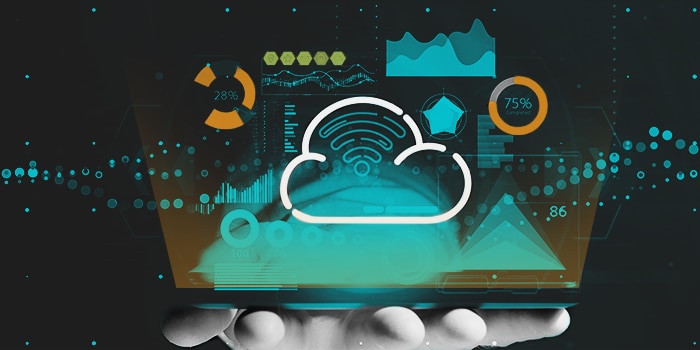Technology has changed a lot in a decade. Flashback to 2009 when smartphone adoption was still growing, and the concept of using a service desk to do anything in the office was a relatively foreign concept.
While email may have dominated in years past, and was the primary method of communication a decade ago, things have changed—dramatically.
While change can be daunting, there has been a lot of good to come from these changes, especially when it comes to IT services. Here are a few key ways IT service management (ITSM) has evolved over the last decade.
The Influence of DevOps on Change and Release Management
The way organizations now think about equipment upgrades, making changes to a network, or anything in between has been influenced heavily by the introduction of
DevOps circa 2007.
Instead of sticking to a traditional siloed or waterfall approach to projects and infrastructure changes, IT pros are becoming more agile than ever in their processes.
Extensive planning sessions inside closed boardrooms are being replaced by more modern methodologies, quicker collaboration with developers, and encouraging ongoing feedback and improvements.
This has been reflected in the addition of change management and release management features within the modern service desk.
The increase of (and improvement to) native integrations with project management tools also signals the continued interconnectedness of both IT professionals and developers in today’s modern office.
AI Has Been Put to Work
Artificial intelligence may still be considered a buzzword by many, but its real world influence is no more evident than in the IT service desk.
Similar to how AI makes our everyday lives easier, this technology is also making it easier to find the information we need in the workplace.
From displaying relevant knowledge base articles to employees, to identifying related incidents that help service desk agents close more tickets, AI in the service desk is streamlining the service delivery process for everyone.
Machine learning as a result of service portal adoption continues to improve employee experiences as well, collecting data over time to make even smarter suggestions based on the tendencies of employees using the portal.
The Prevalence of Mobile in the Workplace
Studies have shown that mobile devices and tablets have
boosted employee productivity by over 30 percent, signaling increased reliance on these devices. With mobile reliance and BYOD policies becoming increasingly prevalent across industries, employees should be able to easily access the resources they need while on the go.
That goes for both end users and service agents. Providing a seamless mobile experience to everyone in the organization can be crucial to enabling employees to do their best work.
Think about an employee in a field service industry. They may not have constant access to a computer in the event that an issue arises, so having access to a mobile app to submit a ticket means the issue can get into the right hands quickly.
Similarly, service agents may not always be tethered to their desks, and a mobile app can give them the flexibility they need to monitor and manage their incident queue from wherever they are.
Increased Importance of IT Asset Data
IT departments shouldn’t look at ITSM as a standalone strategy. Integrating ITSM and IT asset management (ITAM) can be critical to providing you with a comprehensive view of your technology infrastructure and using that data to facilitate service delivery. Your company’s software and hardware device data is proving to be an essential piece of the service desk.
Take for example if an employee submits a ticket. With
IT asset data integrated into the service desk, you will have access to critical information like what hardware and software is associated with the requester, historical data on devices that may be problematic, and prior incident history. This data can help speed up the time it takes to resolve these tickets.
Increased Convenience and Speed of Service Delivery
The technologies that have impacted ITSM are too numerous to list in a single blog post, but there are a couple of important examples of features built into a service desk that have led to increased speed on the front-end for service requesters, as well as on the backend for service providers. Here are a couple of examples:
Adoption of Service Portals
Finding information quickly and as conveniently as possible has accelerated due to employees continuing to use and adopt service portals.
The service portal has come a long way, making finding and accessing resources that both employees and technicians need more convenient than ever. With the help of smart search features, AI is delivering the right information at the right time, pointing users to helpful articles without even leaving the search bar.
The addition to AI and continued ease of use from a UX perspective has made finding information inside service portals even easier over time. Check out our post
5 Self-Service Portal Benefits to Boost Employee Experience to explore the benefits the service portal can offer your organization.
The Emergence of Chat
Sometimes employees still need a way to contact the IT department outside of a portal, and email isn’t the only show in town anymore. Especially over the last few years, you’ve likely noticed the emergence of Slack and other communication tools used internally.
Chat functions are also finding their way into service desk tools as well, offering more convenience and quicker response times.
Is It Time For An Upgrade?
As the ITIL framework has evolved with time, so has the service desk and the way both employees and IT work together and collaborate.
From integrations with messaging apps like Slack to chatbots to mobile apps, the IT service management experience continues to evolve and make IT easier for everyone involved.
Want to experience a more powerful ITSM solution hands-on?
Try SolarWinds Service Desk free for 30 days.





